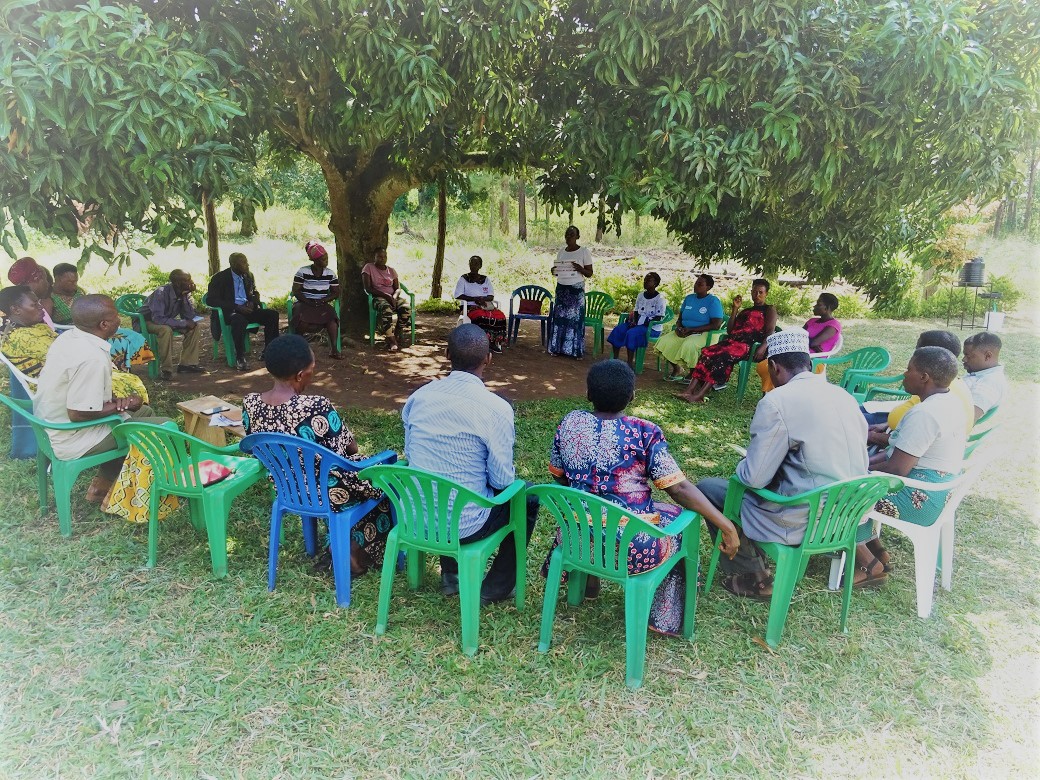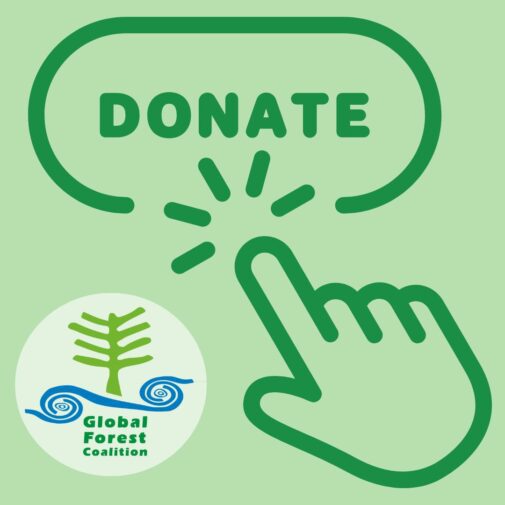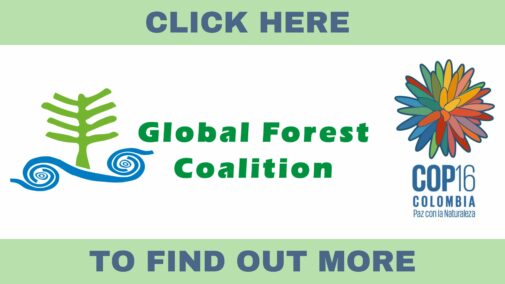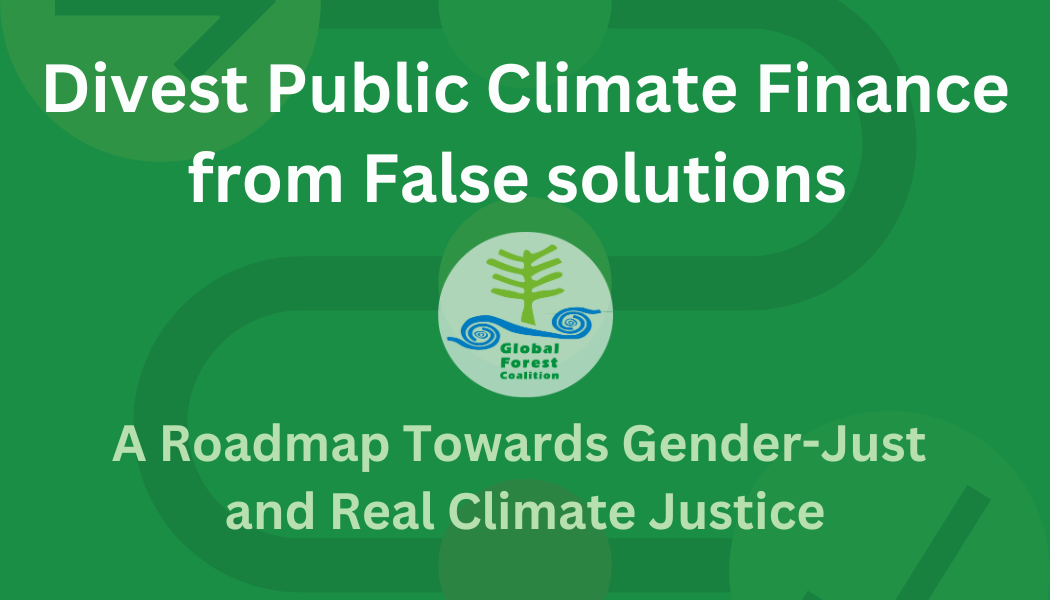The Devastating Plantation Plans of the World Bank Forest Investment Program
By Simone Lovera
Sometimes you expect the worst, and you are not disappointed.
When the World Bank Forest Investment Program (FIP) was established 6 years ago, we were skeptic to say the least, as Global Forest Coalition. The World Bank had funded (and continues to fund) numerous projects with a devastating impact on forests and forest dependent peoples. Putting them in charge of what is until now the largest global fund to invest in projects to reduce emissions from deforestation and forest degradation and enhance forest carbon stocks (REDD+) sounded like a classical case of inviting the wolves to herd the sheep.
Moreover, the FIP would not just give grants, but also loans, and as some of the most important values of forests cannot be reflected in monetary terms the big question was and remains how these loans would be paid back. Only commercially profitable activities are able to generate sufficient financial returns for countries so that they can pay back loans, but the experience with almost any commercially profitable activity in forests is that it leads, in the short or long term, to forest degradation and subsequent deforestation. In fact, as the definition of forests used by the World Bank includes monoculture tree plantations, a significant portion of WB funds are invested in such plantations, simply for the reason that they are far more commercially profitable than any other ‘forest’-related activity.
To make things worse, the benefits of such activities are seldom equitably shared, as the forest sector is marked by strong power imbalances amongst rightsholders and stakeholders. The reason is that most of the world’s large remaining forest areas are located in relatively remote or otherwise economically marginal areas that are inhabited by economically and politically marginalized communities and peoples. These groups tend to be unable to defend themselves against land grabbing and elite resource capture in general by more powerful, often urban, commercial stakeholders. Due to their remoteness, lack of law enforcement is an almost inherent problem in forest governance as well. So in summary, “forest investments’ tend to be nothing but trouble. Not accidentally World Bank staff itself already classified its forest portfolio 15 years ago as “98% of its headache”.
For us as GFC, the slogan was and remains “less Bank, more forests”.
The FIP Sub-Committee meeting that took place on 15 May 2015 in Washington DC mainly discussed the headaches to come. That is, the meeting focused on discussing a number of potentially highly destructive future project proposals and country investment plans. Thanks to a generous contribution of some 175 million USD of the UK, which seems adamant on financing the real drivers of forest loss, the FIP was able to expand its investment portfolio with some 6 additional countries. No less than 36 countries (Benin, Cameroon, Republic of Congo, Ethiopia, Côte d‘Ivoire, Kenya , Madagascar, Mozambique, Rwanda, Sudan, Tanzania, Togo, Uganda, Zambia, Afghanistan, Bangladesh, Nepal, Cambodia, Samoa, Vanuatu, Belarus, Kyrgyz Republic, Montenegro, Turkey, Jordan, Morocco, Tunisia, Dominica, Ecuador, Guatemala, Guyana, Haiti, Honduras, Nicaragua, Saint Lucia and Uruguay) had sent in a so-called Expression of Interest (EOI) in this respect. These EOIs provide interesting insights of the future REDD plans of these countries[1] (See the link below). In large majority they were marked by two features; an absence of references to the equitable sharing of benefits with the women, indigenous peoples and local communities that actually conserve and restore forests, and an overload of references to large-scale monoculture tree plantations.
Needless to say, the contribution of such plantations to the objectives in the original design document of the FIP is highly questionable. Even the expert group that had been established to review the lengthy EOIs of the 36 countries cautioned that “Because plantations are generally harvested in 20-30 year cycles, their effectiveness in contributing to long-term GHG emissions reduction and biodiversity conservation needs to be evaluated in perspective and appropriately weighted in FIP investment decisions”.
Yet, the members of the Sub-Committee were obviously more interested in getting money rolling than in the question where that money would roll to. Their main concern seemed to be that FIP funds were not spent rapidly enough. Admittedly, the fact that only 14 million of the 501 million USD that has been approved by the Sub-Committee until now has actually been spent, does not really plea for the World Bank as an efficient funds administrator. Yet, it was a bit unsettling to hear such desperate pleas for increasing the spending rate in light of the rather poor discussion on the quality of the EOIs and other proposals. Most Sub-Committee members seemed more interested in securing funding for their own or neighboring countries than in any kind of critical analysis of the proposals at hand. As a result, Ecuador, Mozambique, Congo, Nepal, Guatemala and Cote d’Ivoire were selected as new beneficiaries of the FIP, without any significant discussion on their actual plans, which might include quite devastating activities like the multi-landgrabbing Pro Savanna scheme in Mozambique. These countries will now elaborate more detailed business plans, and it would be good for NGOs, IPOs and women’s groups to try and influence that process (even though a question about how major group participation in these countries was secured was not further addressed either).
On a relatively positive note, the meeting also saw the launch of a Designated Grants Mechanism for Indigenous Peoples and local communities of no less than 50 million USD. There is some hope amongst IPOs that at least some of these funds will be used to build their capacity to defend their rights to protect their forest territories. The only complication is that the term “designated” seems to be as vaguely defined by the World Bank as the term “forest”, as the mechanism, and its first grants, are actually administered by large conservation organizations like Conservation International and WWF-Peru rather than by IPOs themselves…
Lastly, the discussion about specific project proposals to be funded in the existing FIP countries (Brazil, Peru, Ghana, Burkina Faso, DRC, Indonesia and Lao PDR) lead to few critical comments about the actual contents of these projects either, even though several of the projects consist of large commercial tree plantations. The star amongst the bad and evil projects the FIP might finance the coming years is the euphemistically entitled “Support Project for the Development of Agroforestry in Four Provinces of the DRC” (PRODAF), which shamelessly defines the establishment of large-scale oil palm plantations as ‘agroforestry’. My question what on earth the establishment of oil palm plantations would contribute to reducing deforestation in a country where plantations had been identified (in a UN-REDD report) as one of the drivers of forest loss, only led to a brief unanimous reaction by the multilateral development banks that they saw ‘no issue’ whatsoever in financing oil palm plantations with FIP funds. Happily, the expert group advised against the project, and as a result the project is not yet approved. But the country representative of DRC protested vehemently so the proposal will be reconsidered the coming month – NGOs and IPOs from DRC and elsewhere that might see an issue with the expansion of oil palm plantations are wholeheartedly invited to send in their comments on the project (see http://www.climateinvestmentfunds.org/cif/sites/climateinvestmentfunds.org/files/FIP_14_5_Report_of_the_Expert_Group_to_the_FIP_Sub_Committee_on_selection_of_new_pilot_countries.pdf for the expert group report on the project proposal. You can also submit your comments to coraina.delaplaza@globalforestcoalition.org and we will compile and forward them).
[1]http://www.climateinvestmentfunds.org/cif/sites/climateinvestmentfunds.org/files/FIP_14_5_Report_of_the_Expert_Group_to_the_FIP_Sub_Committee_on_selection_of_new_pilot_countries.pdf











